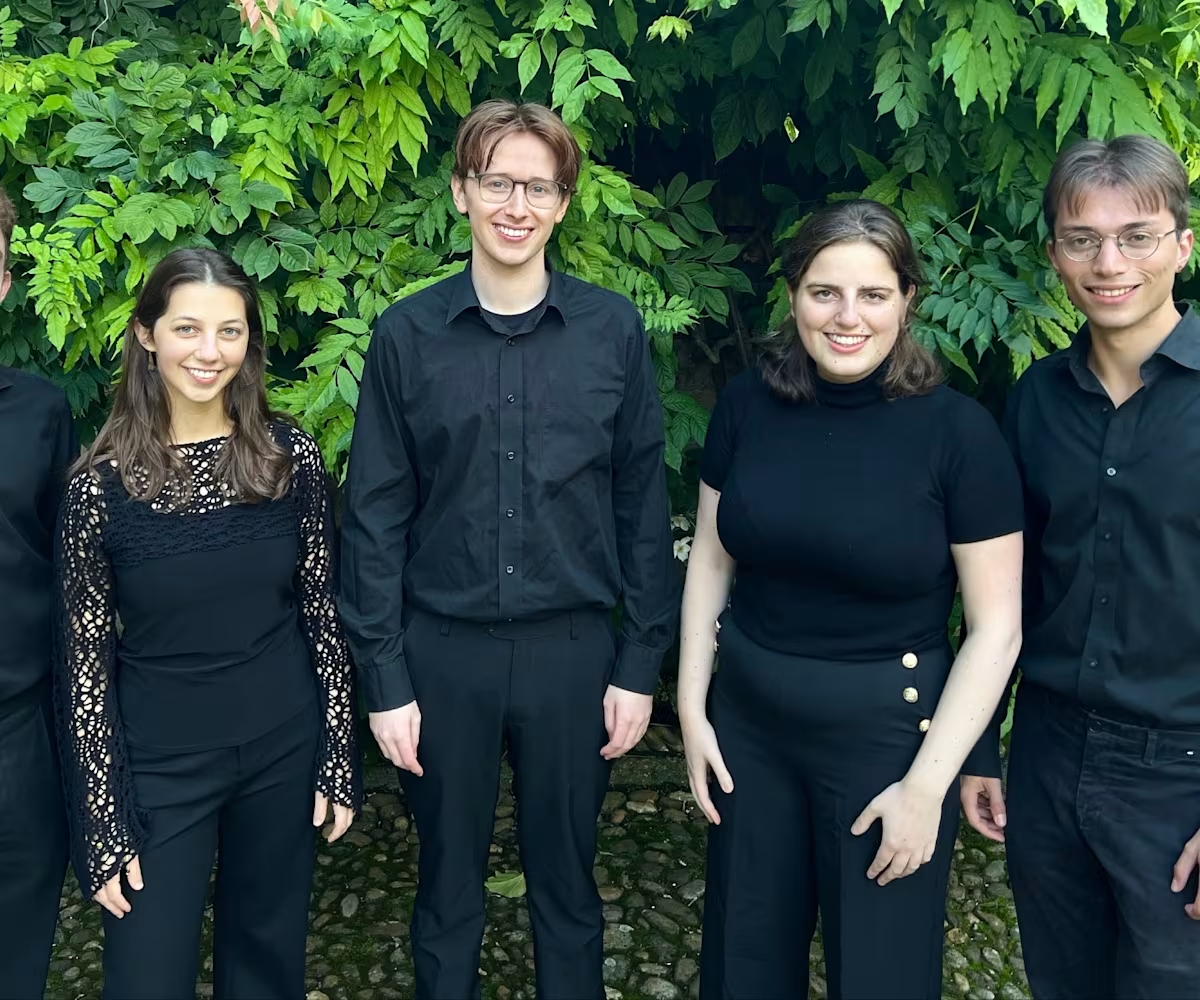Bruegel Consort
Secret Knowledge of the Stars

The epitaph of John Dunstaple (c.1390-1453), renowned English composer, mathematician, and astronomer, states that he had ‘secret knowledge of the stars’. Composers of late-medieval England understood that the celestial movements of the universe emitted inaudible divine music which sounded with the same harmonic proportions as the audible music of human beings. In response to this knowledge they pre-planned their compositions based on webs of numerical proportions and balances and thus reflected God’s heavenly arithmetic in their own creations.
Our programme paints a portrait of the microcosmic approach to composing sacred choral music in England c.1500. Three works are by John Lloyd (c.1475-1523): an antiphon Ave regina celorum and two movements from the Mass O quam suavis, the tenor voices of which are notated in the original manuscript with esoteric number riddles. At the heart of the programme is the pleasingly symmetrical miniature Sancta Maria by Dunstaple, a composer so influential on the following generations. The programme closes with Robert Fayrfax’s (1464-1521) evocative antiphon Ave Dei Patris filia, a popular and influential work in Fayrfax’s day and one thoughtfully structured on 2:3 and 3:5 proportions.
 Thu, 20 March 2025
Thu, 20 March 2025 Sidney Sussex College Chapel, Cambridge
Sidney Sussex College Chapel, Cambridge 8:00pm
8:00pm Free entry (retiring collection)
Free entry (retiring collection)
Full Event Details

Join the Bruegel Consort for an evening of sacred vocal music from the reign of Henry VII.
The epitaph of John Dunstaple (c.1390-1453), renowned English composer, mathematician, and astronomer, states that he had ‘secret knowledge of the stars’. Composers of late-medieval England understood that the celestial movements of the universe emitted inaudible divine music which sounded with the same harmonic proportions as the audible music of human beings. In response to this knowledge they pre-planned their compositions based on webs of numerical proportions and balances and thus reflected God’s heavenly arithmetic in their own creations.
Our programme paints a portrait of the microcosmic approach to composing sacred choral music in England c.1500. Three works are by John Lloyd (c.1475-1523): an antiphon Ave regina celorum and two movements from the Mass O quam suavis, the tenor voices of which are notated in the original manuscript with esoteric number riddles. At the heart of the programme is the pleasingly symmetrical miniature Sancta Maria by Dunstaple, a composer so influential on the following generations. The programme closes with Robert Fayrfax’s (1464-1521) evocative antiphon Ave Dei Patris filia, a popular and influential work in Fayrfax’s day and one thoughtfully structured on 2:3 and 3:5 proportions.
Venue Details & Map

Location
Sidney Sussex College Chapel, Cambridge
Sidney Sussex College, Sussex St, Cambridge CB2 3HU

